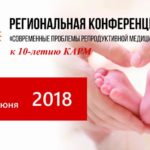Questions and Answers
In vitro fertilization (IVF) is the most common ART (assisted reproductive technology) procedure, which is used in the case of tubal infertility, endometriosis or unsuccessful attempts to stimulate ovulation in natural cycles and in cases of desire to preserve personal genetic material.
The IVF procedure consists of several stages: stimulation of multifollicular growth (simultaneously growing and developing many follicles in one cycle), puncture of follicles and oocyte removal, fertilization of oocytes in the embryological laboratory and/or cryopreservation of oocytes. In 2-5 days, resulting embryos are transferred to the female uterus and/or cryopreservation of the embryos is carried out.
Intracytoplasmic sperm injection (ICSI) is used mainly in male infertility factor (low sperm quality, small number of male gametes or low sperm motility).
ICSI procedure is performed at the laboratory stage of IVF and means the embryologist using a microscope to inject a sperm directly into the egg. If the egg is successfully fertilized after ICSI procedure, the resulting embryo (s) are transferred to the uterine cavity.
Before implanting in the uterus, the embryo must come out of its shell. This process is called hatching (emergence). With age, the process can be disrupted, and then specialists perform assisted hatching – they make a hole prior to embryo transfer using dilute acid or a laser in the embryo shell. This procedure may increase the likelihood of pregnancy in older women or after several failed IVF attempts; in some cases, assisted hatching is also used in cryocycles after thawing of the congelated embryo.
Donor sperm is used in case of serious chromosomal abnormality or lack of sperm at the request of patients.
Any man mentally and physically healthy, of any nationality and religion can become a donor.
Requirements for sperm donors:
- age -18-35,
- absence of any deviations in normal organometric and phenotype.- share of progressive mobile forms (A+B) is more than 50 %;
- share of morphologically normal forms is more than 30 % (according to strict Kruger criteria - 14 % or more);
To obtain sperm analysis, the following requirements must be met:
- 3 days of sexual abstinence before sperm delivery to the study
- it is not recommended to visit the baths and saunas, because high temperature can adversely affect the quality of sperm
- before passing the analysis to exclude alcohol, spicy and fatty foods.
Egg donation is used in the case when woman does not have her own oocytes (exhausted reserve) or they are abnormal. In case of egg donation, IVF is carried out in the usual manner, the only difference is that the stimulation of multifollicular growth is carried out by the donor. At the same time, the receptionist (prospective mother) is also taking medication so that to keep her cycle synchronized with the donor cycle and her uterus is ready to take the embryo (s). Donor eggs are fertilized in the laboratory, and the resulting embryos are transferred to the recipient's uterus.
Preimplantation genetic diagnosis (PGD) is a technique used during in vitro fertilization to check embryos for genetic defects. Chromosomal abnormalities occur in 50-60% of embryos in women under 35, with an increase of up to 80-90% in women over the age of 41. These disorders are one of the main causes of unsuccessful implantation, miscarriage, and chromosomal abnormalities at birth (for example, Down syndrome).The frequency of pregnancy in IVF programs, according to international statistics, ranges from 30% to 40%. Preimplantation genetic testing (PGT) is a technology used in conjunction with the IVF cycle. This procedure is performed on embryos before transfer to the uterus, to detect genetic diseases and chromosomal abnormalities.
The indications for PGT:
- patients with several cases of miscarriages in the past (habitual abortion)
- failures in the IVF cycle despite the transfer of good quality embryos
- heavy male factor
- age of both patients is over 35
PGT using NGS (NextGenerationSequencing) is able to analyze all chromosomes of the embryo. Using PGT in the IVF cycle one can significantly reduce the risk of unsuccessful implantation, early embryonic loss, as well as increase the chances of having a healthy baby. The pregnancy rate in IVF with PGT increases to 70-80%.
Good quality embryos not used in the cycle can be frozen and replanted later. This allows avoiding repeated cycles of ovulation stimulation and follicle puncture. Storaging of embryos takes place at a very low temperature in special straws placed in liquid nitrogen.
It does indeed. It is noted that with age (starting from about 35) the chance of success with IVF decreases. However, the use of modern reproduction methods allows a woman to achieve successful result at almost any age. It should only be remembered that after the onset of menopause a woman can become pregnant only with the use of a donor egg.
Yes, we carry out cryopreservation of embryos and already have a successful experience in transferring cryopreserved embryos.
Depending on whether or not the fallopian tubes are permeated various methods of infertility treatment are carried out — IVF or a much cheaper and simple procedure of intrauterine insemination.
First, a male should be healthy. It is recommended to abstain for no more than 3-5 days. It is assumed that before the delivery of sperm for analysis, a male should avoid stressful situations, exhausting physical labor, harmful professional factors (radioactive, chemical, etc.)
Cryopreservation of sperm is carried out in the following cases:
1) In in vitro fertilization programs.
Usually a male provides the ejaculate on the day of follicle puncture, so that the embryologist can immediately fertilize the eggs. But sometimes a man cannot show up on time. For example, he must be at work on this day. In this case, the spouse comes in advance on any day. He gives the sperm, and it shall be frozen. Then, on the right day, the biomaterial is thawed and used for fertilization of eggs.
2) For sperm accumulation.
For example, a male has little ejaculate or insufficient number of sperms. In this case, he provides the sperm few times. It is frozen and on the right day is used for artificial insemination or IVF cycle.
3) To use sperm in the future.
Today the man is young and healthy. But this will not always happen. Therefore, some men freeze sperm in advance to be able to use it for fertilization in a few years.
It is especially important to freeze the biomaterial in the case of upcoming surgery on the pelvic organs, chemotherapy or radiation therapy.
The main indication for the stimulation of ovulation is anovulatory infertility. If female eggs do not grow in each cycle, it is almost impossible to get pregnant. The patient may not have ovulatory cycles at all. In other cases, ovulation is observed only 2-3 times a year, which makes fertilization hardly probable.
Most often the stimulation of ovulation as a method of infertility treatment is used in such diseases and conditions:
- insufficient function of the hypothalamus;
- polycystic ovary syndrome (PCOS);
- hyperprolactinemia;
- hyperandrogenism.
In addition, medical stimulation of ovulation is used in ART cycles. It is used in IVF.
The indications for the procedure are also cryopreservation of eggs, when a woman wants to freeze them and put in a cryobank for long-term storage, as well as oocyte donation. In this case, the eggs are also frozen, but only to be used by other women in IVF cycles with donor oocytes.
Before the stimulation of ovulation, both male and female should be examined.
Its purposes:
- Selection of the optimal scheme of ovulation stimulation.
- Determination of possible contraindications for this procedure, as well as for pregnancy.
- Detection of additional factors of infertility that can make the stimulation of ovulation ineffective (male factor, tubal obstruction, etc.).
Women are prescribed with hormonal drugs. At the beginning of the cycle it can be clomiphene citrate or gonadotropins. In the middle of the cycle, HCG is used as a single injection. In the second half of the cycle progesterone preparations shall be prescribed.
During the induction of ovulation, follicle maturation (folliculometry) is to be monitored. This is done using ultrasound. The doctor examines the ovaries with ultrasound and measures the diameter of the dominant follicle.
In this way, he/she determines the optimal date for introducing HCG and fertilizing sexual intercourse (artificial insemination or puncture of follicles for IVF).
Hyperstimulation syndrome. It develops in 1% of women. In the vast majority of cases, it occurs in a light or medium-heavy form. Individually selected stimulation scheme in our Clinic allows reducing the risk of hyperstimulation to a minimum.
Multiple pregnancy. The incidence of multiple pregnancies is significantly higher among patients receiving stimulation than among women who have become pregnant without medical care. This is due to the fact that 2 or more eggs can mature in the ovaries under the influence of hormones.
Side effects of drugs. Sometimes during stimulation a woman complains about minor side effects. Among them are “hot flashes”, insomnia, fatigue, depression. All side effects are reversible. They completely disappear after the cancellation of drugs.



 Russian
Russian Kazakh
Kazakh Chinese
Chinese


